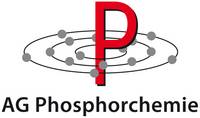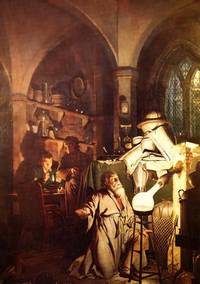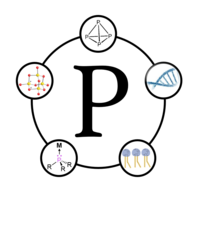




The Working Group Phosphorus Chemistry was founded on March 19, 2019, on the sidelines of the Chemiedozententagung in Koblenz and currently has around 250 members. It brings together the strong activities in the field of phosphorus chemistry in Germany and Europe and raises awareness of them. While not directly anchored in its name, the chemistry of the heavy homologues of phosphorus has played an important role from the outset and is always considered.
phosphorus chemistry is closely linked in many ways to chemical research in Germany. The element was discovered in Hamburg in 1669 by Hennig Brand, a German pharmacist and alchemist who originally wanted to find the philosopher's stone. The phosphorus chemiluminescence that occurred during the discovery, after being demystified as the "Mitscherlich test" (by Eilhard Mitscherlich, 1794-1863), found its way into forensic chemistry, thus establishing an important branch of the systematic investigation of criminal activity.
Phosphorus is also known for its variety of allotropes, of which white, red, black, and violet phosphorus have long been known. White phosphorus (P 4 ) is the modification that represents the product of large-scale production. The high reactivity and molecular structure of P 4 are highly valued in research; for example, phosphorus-rich molecular compounds can be constructed through functionalization. Diverse relationships exist between phosphorus and its heavy homologues: arsenic, antimony, and bismuth, which are becoming increasingly important in materials science and catalysis. Therefore, the working group also focuses on the chemistry of the heavy elements of Group 15.
Phosphorus compounds are essential for all biological organisms, as they are components of elementary biomolecules and, in the form of nucleotides, secondary messengers, and phosphorylations as post-translational modifications of proteins, are responsible for fundamental cellular mechanisms. Phosphorus compounds are also important building blocks in molecular probes in chemical biology and modern pharmaceuticals, and are thus central to medicinal chemistry. One example is the hepatitis C drug sofosbovir, which is based on the development of a nucleotide analogue and thus a phosphorus(V) compound.
Phosphorus compounds are indispensable in inorganic and organic synthetic chemistry, whether in the Wittig reaction, the Staudinger reaction, the Arbusov and Michaelis-Arbusov reactions, the Mitsunobu reaction, or the Horner-Wadsworth-Emmons reaction, as organocatalysts or as multifunctional phosphine ligands, also in the form of chiral ligands in metal complex catalysts. Phosphorus is also an important element in solid-state chemistry and materials science , for example, in light-emitting diodes, steels, and even matches. Phosphorene (a relative of graphene) is a new, interesting two-dimensional material that has gained increasing interest in recent years, including among German phosphorus chemists. And last but not least, phosphorus compounds play an essential role in the chemical industry, e.g. as drying agents (e.g. phosphorus(V) oxide), in flame retardants, additives, plasticizers and pesticides, or as phosphate in fertilizers.
Shortlink to this page: www.gdch.de/phosphorchemie
This page has been machine translated. If you have any feedback or comments please feel free to contact us. 
last modified: 22.08.2025 15:59 H from Translator